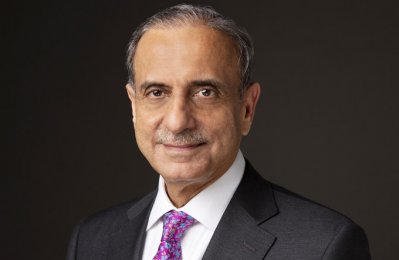[ad_1]
The combined net income of the 10 largest banks in the UAE will increase by 31.7% year-on-year to AED49.8 billion (US$13.5 billion) in FY2022, mainly due to a 26.7% increase in net interest income (NII) year-on-year, a report said.
According to the latest UAE Banking Pulse FY2022 published by leading global professional services firm Alvarez & Marsal (A&M), the performance of the largest banks shows improved profitability, improved asset quality ratios, return on equity and assets, while strengthening capital positioning).
L&A grew 5.7% YoY, faster than FY21 (1.6% YoY); deposits grew 11.3% YoY, higher than the previous year (6.7% YoY),
While significant increases in interest rates have helped boost profitability, the inevitable cycle of reduced loan demand was evident in 4Q22. This may put pressure on asset quality in 2023. Total net interest margin (NIM) increased by 37 basis points (bps) in FY2022 due to higher yield income for banks due to higher interest rates.
A&M’s UAE Banking Pulse examined data from the 10 largest listed banks in the UAE, comparing FY22 results with FY21 results. The report uses independent sources of published market data and 16 different indicators to assess banks’ key performance areas, including size, liquidity, revenue, operating efficiency, risk, profitability and capital.
In A&M’s UAE Bank Pulse analysis, the top 10 listed banks in the country are First Abu Dhabi Bank (FAB), Emirates National Bank (ENBD), Abu Dhabi Commercial Bank (ADCB), Dubai Islamic Bank (DIB) , Mashreq Bank (Mashreq), Abu Dhabi Islamic Bank (ADIB), Commercial Bank of Dubai (CBD), National Bank of Fujairah (NBF), National Bank of Ras Al Khaimah (RAK) and Sharjah Islamic Bank (SIB).
Key trends identified for FY2022 are as follows:
1. Customer deposit growth significantly outpaced L&A growth in FY22. In FY22, aggregate deposits of the top 10 banks grew by 11.3% YoY, while total L&A grew by 5.7% YoY. Rising interest rates lead to slower lending and higher deposits. As a result, the total loan-to-deposit ratio (LDR) dropped 4.1 ppts YoY to 77.9%.
2. Total operating income increased by 17.5% year-on-year, mainly due to a year-on-year increase of 26.7% in net interest income. However, non-financing income undercut operating income, as other operating income fell 3.8% year-over-year.
3. As the Central Bank of the United Arab Emirates (CBUAE) raised the policy rate by 4.25% to 4.4% in fiscal year 2022, the increase in benchmark interest rates led to higher credit yields, so the overall net interest margin expanded by 37 basis points from 2021 to 2.4%, with Fed rates were flat, resulting in higher net interest income for all banks. The cost of funds increased by 66 basis points YoY to 1.8%.
4. The operating cost efficiency of UAE banks has generally improved in FY22. Cost-to-income (C/I) ratio improved in FY22, with an overall decline of 1.1% YoY to 31.7%. Total operating income in FY22 increased by 17.5% YoY, and operating expenses increased by 13.5% YoY. Among all 10 banks, only FAB reported a deterioration in C/I, up 5.3% YoY in FY22.
5. Cost of risk (CoR) improved slightly as total impairment charges decreased in FY22. FY22 CoR improved 19bps YoY to close at 0.98%. Total impairment in FY22 decreased by 12.9% YoY to AED17.1bn.
6. Rising interest rates appear to be boosting the profitability of UAE banks. Total net income increased by 31.7% year-over-year. As a result, return on equity (ROE) and return on assets (ROA) in FY22 improved by 2.1 percentage points YoY to 13.2% and 0.3% to 1.6%, respectively.
Asad Ahmed, Managing Director and Head of Middle East Financial Services at A&M, commented: “The overall performance of the banking sector is encouraging and we can see the impact of the rate hike; certain profitability and operating ratios are now at pre-pandemic levels. In 22 For the fiscal year, profitability and net interest margin improved even amid rising interest rates.
“Emirati banks are likely to be encouraged, albeit slowly, in 2023 as the non-oil private sector expands. NPLs and risk costs are expected to increase slightly due to higher provisions as higher interest rates reduce credit demand. However, UAE banks are sufficiently well capitalized to maintain capital adequacy ratio (CAR) levels well above regulatory requirements.” – trade arab news agency
[ad_2]
Source link



